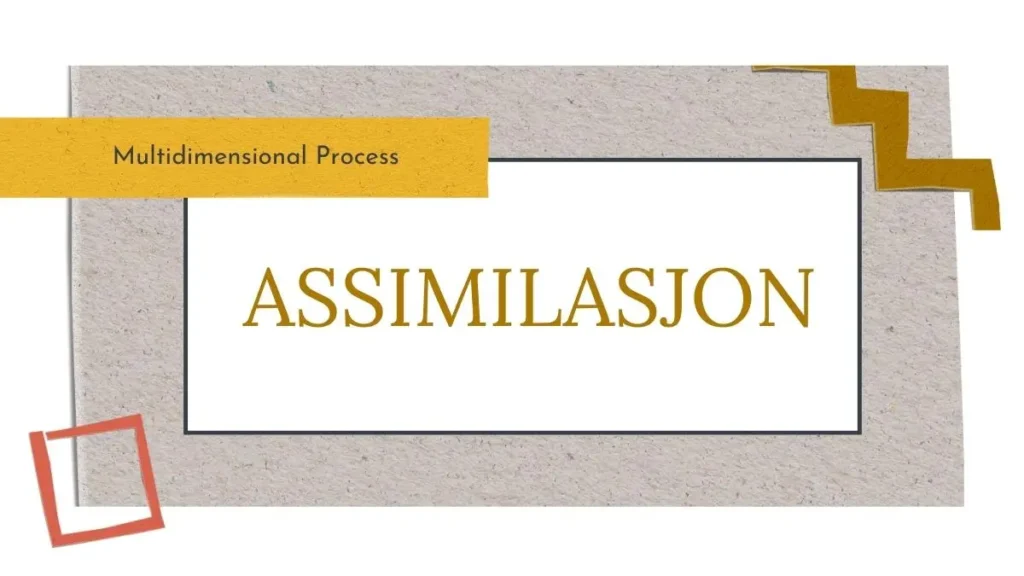In the diverse tapestry of modern society, assimilation plays a pivotal role in how individuals and communities adapt to new environments. The term “assimilasjon,” often used in Scandinavian languages to denote the process of assimilation, refers to the absorption or integration of one culture into another, particularly in social, linguistic, or biological contexts. For health professionals and individuals navigating multicultural settings, understanding assimilasjon is essential, as it influences mental well-being, social cohesion, and overall community health. This article delves into the nuances of assimilasjon, exploring its mechanisms, benefits, and challenges while highlighting its relevance to holistic health in 2025.
The Core Concept of Assimilasjon
Defining Assimilasjon in Cultural Terms
Assimilasjon, at its essence, describes the process where minority groups or individuals adopt the dominant culture’s values, behaviors, and beliefs to blend into society. This can occur voluntarily, as immigrants embrace local customs for better opportunities, or forcibly, through historical policies like those imposed on indigenous populations. In health contexts, assimilasjon affects how newcomers access services, with studies showing that partial assimilasjon—retaining some original traits while adopting new ones—can lead to improved physical health outcomes, such as better nutrition through hybrid diets. However, full assimilasjon might erode protective cultural practices, like traditional healing methods, potentially increasing stress-related illnesses.
Linguistic and Biological Dimensions
Beyond culture, assimilasjon extends to linguistics, where sounds or words adapt in speech, and biology, involving nutrient absorption in the body. In a health niche, the biological aspect is crucial: efficient assimilasjon of vitamins and minerals supports immune function and prevents deficiencies. For instance, in multicultural diets, the body’s ability to assimilate diverse nutrients from global cuisines can enhance vitality, but poor assimilation due to stress from cultural transitions may contribute to conditions like irritable bowel syndrome. Recognizing these layers of assimilasjon helps healthcare providers tailor advice, promoting balanced integration that safeguards both mental and physical health.
Health Impacts of Assimilasjon Processes
Mental Health and Social Integration
Assimilasjon can profoundly affect mental health, often leading to identity conflicts or “acculturative stress.” When individuals undergoing assimilasjon feel pressured to abandon their heritage, it may result in anxiety, depression, or isolation, particularly among immigrants. Research indicates that communities with supportive assimilasjon policies—encouraging integration without erasure—experience lower rates of psychological distress. In 2025, with rising global migration, health experts advocate for assimilasjon models that foster resilience, such as community programs blending cultural traditions with local wellness practices, ultimately boosting emotional well-being and reducing healthcare burdens.
Physical Health Through Adaptive Lifestyles
On the physical front, assimilasjon influences dietary and exercise habits. Adopting a host culture’s food patterns might introduce healthier options, like increased vegetable intake in Western diets, aiding in disease prevention. Conversely, rapid assimilasjon to processed foods can heighten obesity risks. Biological assimilasjon ensures that nutrients from these changes are properly absorbed, supporting metabolic health. For example, yoga enthusiasts assimilating mindfulness from Eastern practices into Western routines report improved cardiovascular health, illustrating how thoughtful assimilasjon enhances longevity and vitality.
Strategies for Healthy Assimilasjon
To navigate assimilasjon effectively, start by embracing hybrid identities—maintaining core cultural elements while incorporating beneficial new ones. In health terms, this means consulting nutritionists for diets that optimize nutrient assimilasjon, such as pairing traditional spices with local produce for better digestion. Mental health support through therapy focused on cultural transitions can mitigate stress, while community groups facilitate social assimilasjon without loss of self. Regular check-ups ensure biological processes like vitamin assimilasjon remain efficient, preventing deficiencies that arise from dietary shifts. By approaching assimilasjon mindfully, individuals can achieve a harmonious balance that promotes overall wellness.
| Aspect | Description |
|---|---|
| Cultural Assimilasjon | Adoption of dominant values, impacting mental health through identity shifts. |
| Linguistic Assimilasjon | Adaptation in speech, aiding communication and social integration. |
| Biological Assimilasjon | Nutrient absorption, essential for physical health and immunity. |
| Health Benefits | Reduced stress with balanced integration; improved nutrition via hybrid diets. |
| Challenges | Acculturative stress, potential loss of traditional practices leading to illness. |
Why Assimilasjon Matters in Modern Health
Assimilasjon remains a double-edged sword in health discussions. While it can foster inclusion and access to better resources, forced or rapid forms often lead to health disparities, as seen in historical indigenous assimilasjon efforts that disrupted community well-being. In today’s globalized world, promoting voluntary, additive assimilasjon—where cultures enrich each other—supports equitable health outcomes. This approach not only preserves diversity but also leverages collective strengths for innovative wellness solutions, making assimilasjon a key factor in public health strategies.
Conclusion: Embracing Balanced Assimilasjon for Wellness
Assimilasjon, or assimilasjon as known in some contexts, is a multifaceted process that shapes our health in profound ways. By understanding its cultural, linguistic, and biological dimensions, we can harness its positive aspects while mitigating risks. Whether through mindful dietary changes or supportive social integration, a healthy approach to assimilasjon empowers individuals to thrive in diverse environments. In 2025, prioritizing assimilasjon that honors heritage while embracing growth will be crucial for personal and communal vitality.
Frequently Asked Questions
What is assimilasjon in a health context?
Assimilasjon refers to cultural integration and biological nutrient absorption, both impacting mental and physical well-being.
How does assimilasjon affect mental health?
It can cause acculturative stress if forced, but balanced assimilasjon promotes resilience and reduces anxiety.
What are the benefits of biological assimilasjon?
Efficient nutrient uptake supports immunity, energy levels, and prevents deficiencies from dietary changes.
Can assimilasjon be positive for immigrants’ health?
Yes, when voluntary, it provides access to better healthcare and hybrid diets that enhance overall vitality.

